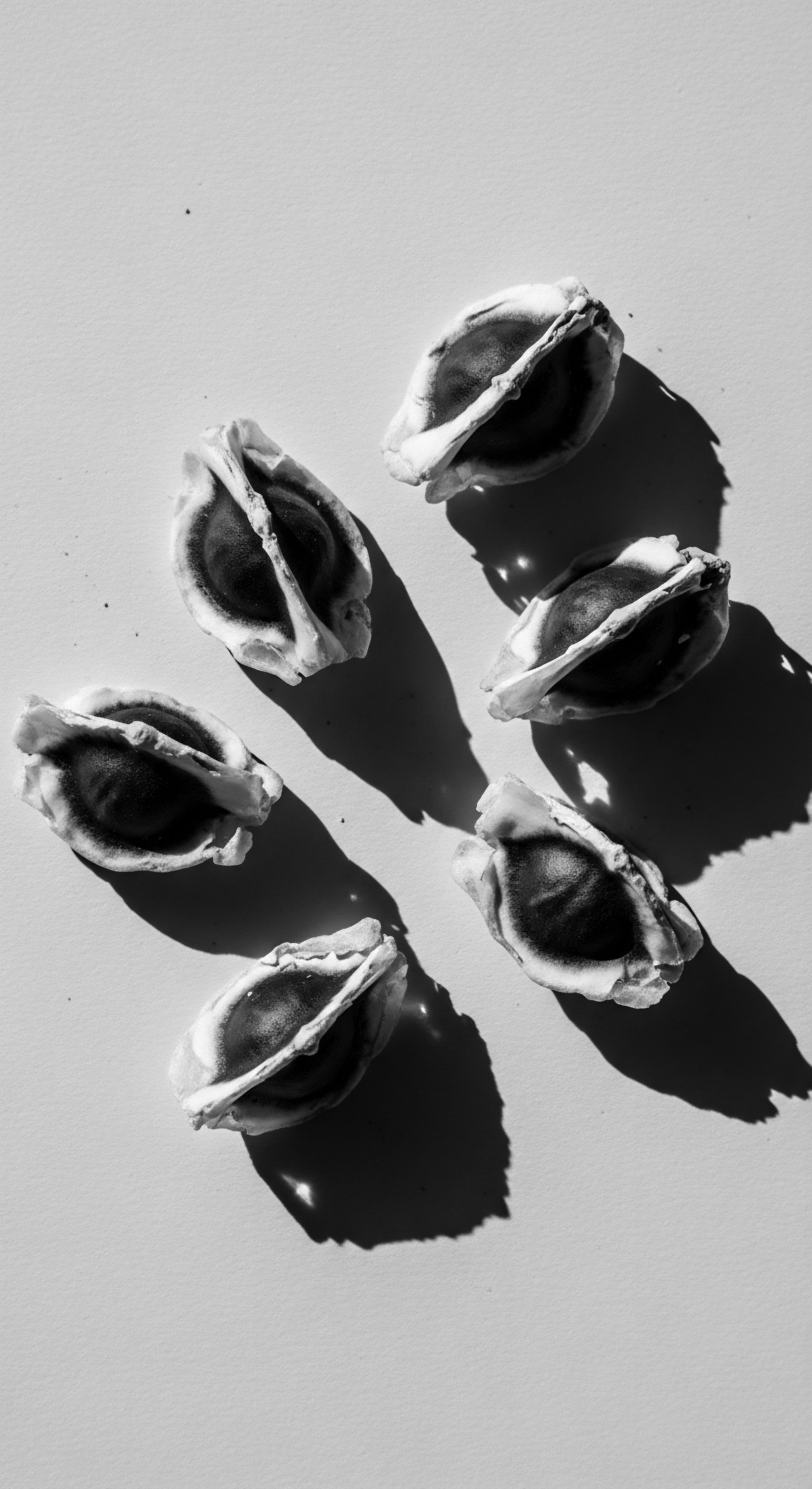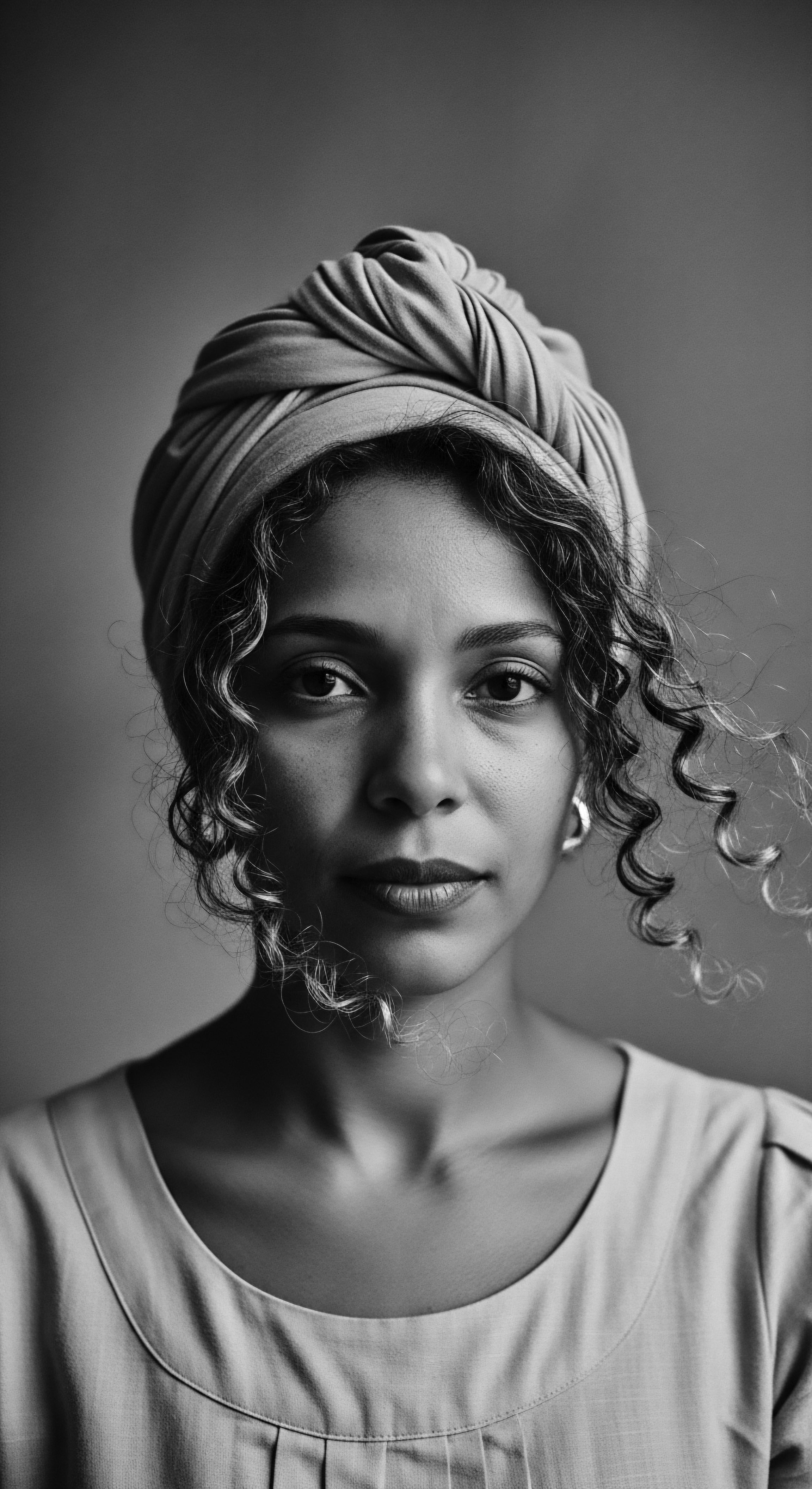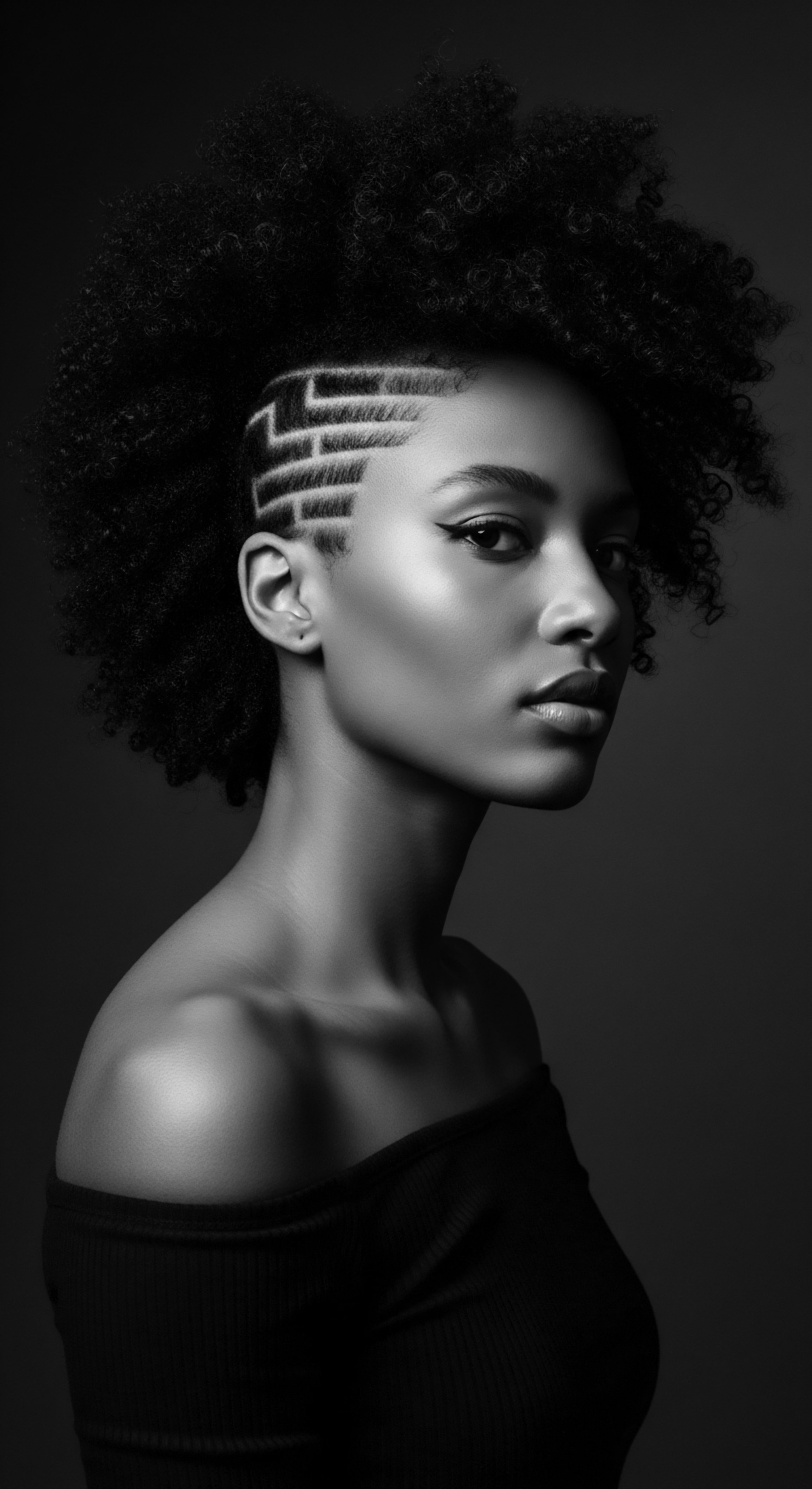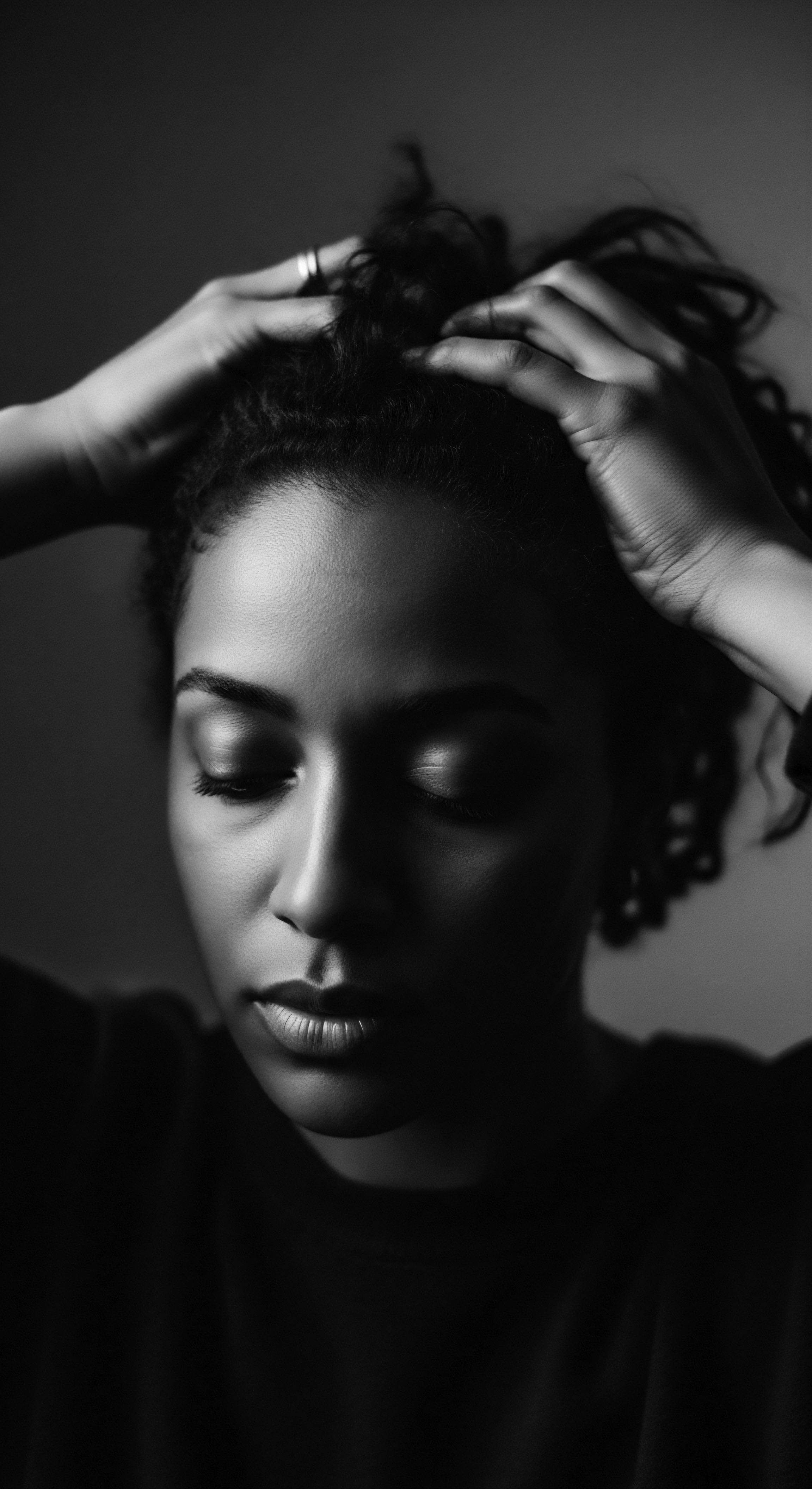
Fundamentals
The concept of Chemical Relaxer Health, within Roothea’s ‘living library,’ stands as a vital articulation of the holistic well-being surrounding chemically altered textured hair. This is not merely a technical term confined to the laboratory or salon; its meaning extends into the very fibers of cultural identity and historical experience. It encompasses the intricate relationship between the chemical processes designed to alter the natural curl pattern of hair and the enduring vitality of the scalp, the resilience of the hair strand, and the broader physiological and psychological equilibrium of the individual. Understanding this designation requires a sensitive gaze upon the journey of textured hair through generations, recognizing the profound connections between ancestral practices, societal pressures, and the choices made concerning hair alteration.
At its fundamental level, Chemical Relaxer Health seeks to clarify the impact of alkaline agents on the hair’s disulfide bonds, the very architecture that bestows upon textured hair its unique coils and curls. These chemical formulations, often containing sodium hydroxide, calcium hydroxide, or guanidine hydroxide, work by breaking down these internal bonds, thereby softening and elongating the hair’s natural structure. The intention, historically, has been to achieve a smoother, straighter appearance.
The health dimension, therefore, delves into the consequences of this molecular rearrangement ❉ the potential for cuticle damage, protein loss, and diminished tensile strength. Yet, the elucidation of Chemical Relaxer Health goes beyond the immediate physical alteration; it questions the long-term implications for scalp integrity, the potential for irritation, burns, and chronic conditions that can arise from repeated exposure to these potent compounds.
Chemical Relaxer Health represents the holistic well-being of textured hair and scalp, intricately woven with the cultural and historical experiences of those who choose chemical alteration.
The initial understanding of Chemical Relaxer Health, particularly for those new to its study, begins with acknowledging hair as a living extension of self, deeply rooted in ancestral practices of care. For countless generations, Black and mixed-race communities have engaged in sophisticated rituals of hair maintenance, utilizing natural emollients, botanical infusions, and intricate styling techniques to honor and protect their hair’s inherent strength and beauty. The advent of chemical relaxers introduced a new dimension to this legacy, offering a path to hair textures that aligned with prevailing Eurocentric beauty standards. The historical context reveals that the pursuit of straight hair was often intertwined with aspirations for social acceptance and economic mobility, creating a complex interplay between personal choice and external societal pressures.
A deeper examination of this meaning reveals that Chemical Relaxer Health is not a static state, but a dynamic equilibrium. It requires diligent post-relaxer care, including rigorous conditioning, moisture replenishment, and protective styling, to mitigate the inevitable structural changes wrought by the chemical process. The delicate balance between achieving a desired aesthetic and preserving the hair’s intrinsic health becomes a central focus. This initial exploration lays the groundwork for appreciating the nuanced historical trajectory of relaxer use and its ongoing dialogue with contemporary understandings of hair science and holistic wellness, always remembering the rich heritage that informs every strand.

Intermediate
Moving beyond the foundational understanding, the intermediate interpretation of Chemical Relaxer Health compels us to consider its multifaceted significance within the broader spectrum of textured hair care and heritage. This is where the scientific delineation of chemical action meets the profound cultural narratives that have shaped Black and mixed-race hair experiences for centuries. The concept expands to encompass not only the direct physiological impact of relaxers but also the psychological and social dimensions of hair alteration, reflecting the deeply personal and communal meanings ascribed to hair within diasporic communities. The health of the hair, in this context, becomes inseparable from the health of the spirit and the continuity of ancestral wisdom.
The explanation of Chemical Relaxer Health at this level requires a more detailed look at the chemical processes themselves. Relaxers typically fall into two main categories ❉ lye (sodium hydroxide) and no-lye (calcium hydroxide or guanidine hydroxide). While no-lye relaxers are often perceived as milder, their chemical action still involves the irreversible breaking of disulfide bonds, albeit through different mechanisms that can sometimes lead to calcium buildup on the hair, causing dryness and brittleness over time.
The careful delineation of these chemical differences becomes paramount in understanding the specific health implications and necessary aftercare strategies. For instance, the pH of relaxers, typically ranging from 10 to 14, is highly alkaline, necessitating extreme caution to prevent chemical burns to the scalp, a common and historically significant concern within the relaxer experience.
Consider the historical lineage of textured hair care, a heritage rich with ingenious methods of styling and protection. Before the widespread adoption of chemical relaxers in the mid-20th century, ancestral practices often involved the use of natural oils, butters, and heat styling methods like hot combs to achieve desired textures. The introduction of relaxers, while offering a perceived convenience and alignment with dominant beauty norms, also brought with it a new set of health considerations that were not part of traditional hair wisdom. The historical shift represents a complex negotiation between inherited cultural practices and the pressures of assimilation, a narrative that continues to influence contemporary hair choices.
The intermediate understanding of Chemical Relaxer Health integrates scientific detail with the profound cultural narratives shaping textured hair experiences, recognizing the interplay of chemical action, historical context, and personal well-being.
The significance of Chemical Relaxer Health at this intermediate stage also involves recognizing the delicate balance required for its responsible application and maintenance. Proper hair preparation, precise application techniques, and meticulous neutralization are all critical steps in minimizing damage. Moreover, the long-term health of relaxed hair hinges on consistent moisturizing, protein treatments, and avoidance of excessive heat.
This comprehensive approach to care acknowledges the hair’s altered state and strives to maintain its integrity, preventing breakage, thinning, and scalp issues. The journey of relaxed hair, therefore, is not merely about achieving a straightened look; it is a continuous act of guardianship, honoring the hair’s inherent structure while adapting to its chemically modified form.
Furthermore, this perspective encourages a deeper reflection on the individual’s relationship with their hair and the historical context of their choices. For many, relaxers were a rite of passage, a shared experience within families and communities. The meaning of Chemical Relaxer Health, then, also encompasses the psychological well-being derived from these choices, whether they stem from personal preference, societal expectation, or a blend of both. It invites a compassionate exploration of the complex heritage of hair practices, where every decision carries echoes of the past and shapes the narrative of the future strand.

Academic
The academic definition of Chemical Relaxer Health transcends superficial observations, positioning it as a critical locus for interdisciplinary inquiry, bridging the fields of trichology, dermatology, public health, cultural anthropology, and Black studies. This rigorous explication of the term demands a comprehensive analysis of its biochemical mechanisms, its profound socio-historical implications, and its documented long-term physiological consequences, particularly within populations with textured hair. The meaning here is not merely descriptive; it is an analytical framework for dissecting the complex interplay between cosmetic practice, systemic health disparities, and the enduring legacy of racialized beauty standards. This delineation of Chemical Relaxer Health provides a robust lens through which to examine the intricate relationship between external applications and internal bodily responses, grounded in empirical data and critical theoretical perspectives.
At its core, the academic understanding of Chemical Relaxer Health centers on the irreversible alteration of the hair’s keratin structure. Chemical relaxers, acting as strong reducing or oxidizing agents, disrupt the disulfide bonds that provide the natural strength and curl memory of hair. Lye-based relaxers (primarily sodium hydroxide) achieve this through a process known as lanthionization, where disulfide bonds are converted into lanthionine bonds, resulting in permanent straightening. No-lye relaxers (often guanidine hydroxide or calcium hydroxide) operate via a different mechanism, though they also cleave disulfide bonds.
While these processes achieve the desired aesthetic of straightness, they fundamentally compromise the hair’s tensile strength, elasticity, and hydrophobicity, rendering it more susceptible to breakage, dryness, and environmental damage. The persistent high alkalinity of these products, even after neutralization, can disrupt the scalp’s delicate pH balance, impairing its barrier function and predisposing it to inflammation, infections, and follicular damage.
The academic definition of Chemical Relaxer Health offers a critical framework for analyzing the biochemical, socio-historical, and physiological impacts of hair relaxers on textured hair, particularly within the context of health disparities.

Interconnected Incidences ❉ Chemical Relaxers and Systemic Health Outcomes
The academic inquiry into Chemical Relaxer Health gains particular urgency when examining its potential connections to systemic health outcomes, a less commonly discussed but profoundly significant aspect of its meaning. Beyond the immediate hair and scalp damage, a growing body of epidemiological research points to a concerning correlation between long-term chemical relaxer use and an elevated risk of certain chronic diseases, particularly among Black women. This nexus represents a critical intersection of cosmetic practice, environmental justice, and public health.
One area of intense focus involves the potential link between relaxer use and Uterine Fibroids. Uterine fibroids, benign growths of the uterus, are disproportionately prevalent and severe among Black women, who experience earlier onset, larger fibroids, and higher rates of surgical intervention compared to women of other racial backgrounds (Baird et al. 2014). Researchers have posited that exposure to endocrine-disrupting chemicals (EDCs) present in many hair products, including relaxers, may contribute to this disparity.
Phthalates, parabens, and cyclosiloxanes are common ingredients in relaxers and associated hair care products, known for their estrogenic or anti-androgenic properties. These chemicals can mimic or interfere with natural hormones, potentially disrupting the delicate hormonal balance that regulates uterine tissue growth. A landmark study published in the Environmental Health Perspectives journal found a statistically significant association between frequent use of hair relaxers and increased risk of uterine fibroids among African American women, with those using relaxers for longer durations or more frequently exhibiting higher risks (Wise et al. 2012). This particular finding underscores a profound connection between cosmetic practices rooted in historical beauty standards and a prevalent health condition affecting a significant portion of the Black female population, revealing a deeply embedded health consequence of textured hair heritage navigating societal pressures.
Moreover, the academic discourse on Chemical Relaxer Health extends to the potential carcinogenicity of certain relaxer components. Concerns have been raised regarding the presence of formaldehyde-releasing agents, parabens, and phthalates, some of which are classified as potential carcinogens or endocrine disruptors. While direct causal links are still under rigorous investigation, several studies have explored associations between relaxer use and an increased risk of hormone-sensitive cancers, such as Breast Cancer and Ovarian Cancer. For instance, a 2019 study published in the International Journal of Cancer, utilizing data from the Sister Study, observed a higher risk of breast cancer among women who regularly used hair dyes and chemical straighteners, with the association being stronger for Black women (White et al.
2019). These findings, while necessitating further research to establish definitive causation and elucidate specific mechanisms, compel a re-evaluation of the health implications of long-term chemical exposure from hair products, especially within communities that have historically relied heavily on these products due to pervasive beauty ideals. The implications for public health policy, product regulation, and culturally informed health education are substantial, urging a re-examination of ancestral care practices that inherently avoided such chemical exposures.

Multicultural Aspects and Historical Trajectories
The academic exploration of Chemical Relaxer Health also necessitates a multicultural perspective, acknowledging that while the experience is acutely felt within Black communities globally, the pressures to conform to Eurocentric hair standards have touched various textured hair populations. The historical evolution of relaxers, from early lye-based concoctions to modern no-lye formulations, reflects a continuous quest for effective hair straightening, often driven by societal pressures that valorized straight hair as a marker of professionalism, beauty, and respectability.
In the mid-20th century, the rise of the beauty industry saw chemical relaxers become a ubiquitous staple in Black hair care, transforming salons into social hubs where generations gathered. This period marked a significant departure from traditional African hair practices, which celebrated the natural texture and versatility of coils and curls. The societal imperative to achieve straight hair, often internalized, created a complex relationship with chemical relaxers – a tool for perceived liberation and integration, yet also a source of potential physical harm and a disconnect from ancestral hair identities. The academic lens allows us to unpack this duality, recognizing the agency of individuals within constraining historical contexts, while simultaneously exposing the systemic forces that shaped hair choices.
The study of Chemical Relaxer Health, therefore, is not merely a clinical assessment of chemical impact; it is a profound sociological and historical investigation into how beauty standards, racial dynamics, and economic forces have converged upon the bodies and identities of those with textured hair. It compels a critical examination of the industry’s role in promoting products with potentially harmful ingredients and the broader societal responsibility to foster an environment where natural hair is not only accepted but celebrated in all its diverse, ancestral forms. This rigorous approach seeks to provide a comprehensive explanation, delineating the intricate web of factors that contribute to the current understanding of Chemical Relaxer Health.
| Dimension of Health Hair Fiber Integrity |
| Historical Context (Mid-20th Century) Focus on achieving straightness; breakage seen as an unfortunate side effect of a desired aesthetic. Limited understanding of protein loss or cuticle damage. |
| Contemporary Academic Understanding (21st Century) Detailed biochemical analysis of disulfide bond cleavage, protein degradation, and cuticle erosion. Emphasis on irreversible structural weakening and increased porosity. |
| Dimension of Health Scalp Health |
| Historical Context (Mid-20th Century) Scalp burns and irritation were common but often accepted as part of the process, attributed to 'strong hair' or improper application. |
| Contemporary Academic Understanding (21st Century) In-depth dermatological studies on chemical burns, contact dermatitis, folliculitis, and chronic inflammation. Recognition of disrupted scalp microbiome and barrier function. |
| Dimension of Health Systemic Health |
| Historical Context (Mid-20th Century) Largely unacknowledged or dismissed; focus solely on visible hair and scalp effects. |
| Contemporary Academic Understanding (21st Century) Emerging epidemiological research linking long-term use to disproportionate rates of uterine fibroids, certain cancers (breast, ovarian), and other endocrine disruptions in Black women. |
| Dimension of Health Psychological Well-being |
| Historical Context (Mid-20th Century) Relaxers often associated with social acceptance, professionalism, and 'good hair,' reducing perceived stigma. |
| Contemporary Academic Understanding (21st Century) Critical examination of internalized racism, self-esteem, and body image issues tied to hair texture. Recognition of the psychological burden of maintaining straightened hair and the liberating aspects of the natural hair movement. |
| Dimension of Health Cultural & Ancestral Link |
| Historical Context (Mid-20th Century) A departure from traditional, natural hair practices; seen as a modern advancement. |
| Contemporary Academic Understanding (21st Century) Reconnection to ancestral hair care wisdom; critical re-evaluation of the historical forces that led to relaxer adoption; celebration of natural texture as a return to heritage. |
| Dimension of Health This table illustrates the evolving meaning of Chemical Relaxer Health, moving from a superficial understanding of cosmetic alteration to a profound recognition of its complex impacts on textured hair heritage and overall well-being. |

Future Directions and Implications
The ongoing scholarly discourse on Chemical Relaxer Health calls for sustained research into less harmful straightening alternatives, comprehensive public health campaigns targeting textured hair communities, and policy changes that mandate greater transparency in cosmetic product ingredients. It also compels a deeper investigation into ancestral knowledge systems, which often held profound wisdom regarding natural hair care and botanical remedies, offering potential pathways for holistic hair health that honor inherited traditions. The ultimate goal is to empower individuals with textured hair to make informed choices, free from the historical and ongoing pressures that have often dictated hair practices, thereby fostering a truly liberated and healthy relationship with their unique hair heritage. The delineation of Chemical Relaxer Health at this academic level serves as a foundational statement, driving further research and advocacy.

Reflection on the Heritage of Chemical Relaxer Health
As we close this exploration of Chemical Relaxer Health, the profound meditation on Textured Hair, its Heritage, and its Care, Roothea’s ‘living library’ calls us to pause and truly listen to the whispers of the strands. Each coil, every wave, and the very journey of straightened hair holds a narrative of resilience, adaptation, and an enduring connection to ancestral wisdom. The meaning of Chemical Relaxer Health, then, is not static; it breathes with the collective experiences of generations, reflecting shifts in societal expectations, the relentless pursuit of beauty, and the powerful reclamation of inherent identity.
The echoes from the source remind us of a time when hair was revered as a spiritual conduit, a marker of lineage, and a canvas for intricate artistry, nurtured with the tender threads of natural ingredients and communal care. The advent of chemical relaxers, while offering a pathway to conformity in a world often unwelcoming of natural texture, also introduced a new set of considerations for the tender thread of well-being. This journey, from elemental biology to the living traditions of care, has been a testament to the adaptive spirit of textured hair communities. The understanding of Chemical Relaxer Health now beckons us to honor the past without being bound by its limitations, to learn from its complexities, and to forge a path forward that prioritizes authentic well-being.
The unbound helix of textured hair, in its myriad forms, speaks of a future where choices are truly liberated, where every individual can embrace their natural texture or choose to alter it with full knowledge and care, free from the shadow of historical pressures or health concerns. The ongoing dialogue surrounding Chemical Relaxer Health is a vital part of this liberation, a continuous act of honoring the body, mind, and spirit. It is a call to cherish the ancestral wisdom that teaches us to nurture what is inherently ours, to understand the science that empowers informed decisions, and to celebrate the rich, diverse heritage that flows through every single strand. This enduring conversation about Chemical Relaxer Health ultimately seeks to cultivate a deeper reverence for the magnificent story of textured hair, ensuring its legacy is one of health, self-acceptance, and unyielding beauty.

References
- Baird, D. D. Dunson, D. B. Hill, M. C. Cousins, D. & Schectman, J. M. (2014). Association of uterine fibroid risk and self-reported hair relaxer use in the Black Women’s Health Study. American Journal of Epidemiology, 179(3), 353-360.
- Branch, S. & Collins, B. (2015). African American hair care ❉ A comprehensive guide. John Wiley & Sons.
- Byrd, A. D. & Tharps, L. D. (2014). Hair story ❉ Untangling the roots of Black hair in America. St. Martin’s Press.
- Davis, C. M. (2019). African American women and hair ❉ An analysis of changing styles. Routledge.
- Gittens, L. (2018). The anthropology of hair ❉ An investigation into cultural, social, and personal meaning. University of California Press.
- Hunter, P. (2011). Black hair ❉ A cultural history. Dover Publications.
- Jackson, A. T. & Jackson, J. J. (2017). Chemical hair relaxers ❉ A historical and health perspective. Journal of Cosmetic Dermatology, 16(2), 200-208.
- Patton, T. (2006). Hair raising ❉ Beauty, culture, and African American women. Rutgers University Press.
- Wise, L. A. Palmer, J. R. Rosenberg, L. & Coogan, P. F. (2012). A prospective study of hair relaxer use and uterine leiomyomata risk in African American women. Environmental Health Perspectives, 120(10), 1381-1387.
- White, A. J. Sandler, D. P. Jackson, C. L. & Baird, D. D. (2019). Hair dye and chemical straightener use and breast cancer risk in a large US population-based study. International Journal of Cancer, 146(7), 1735-1745.
